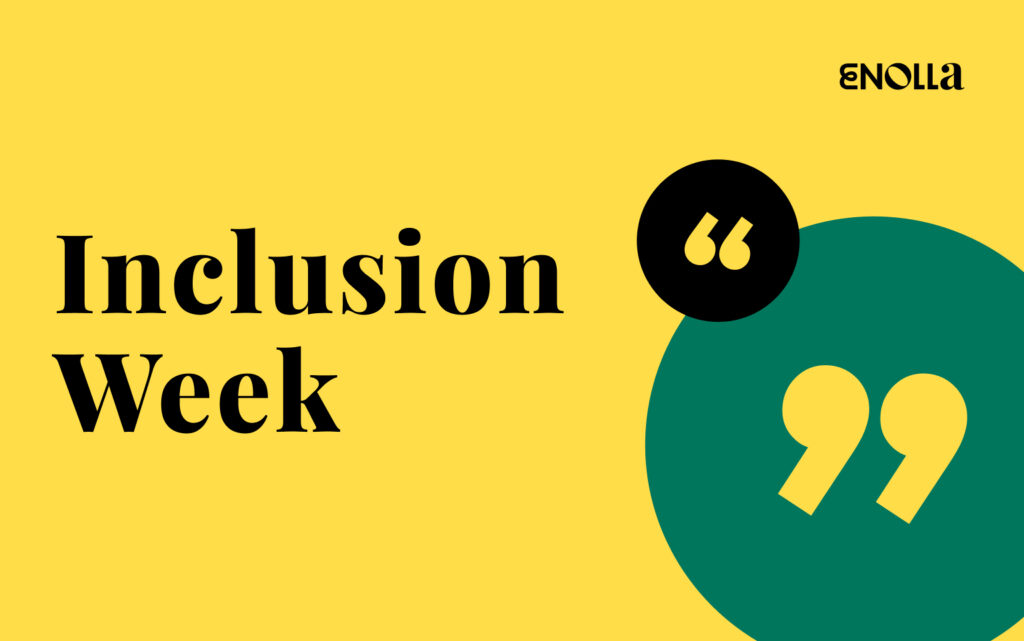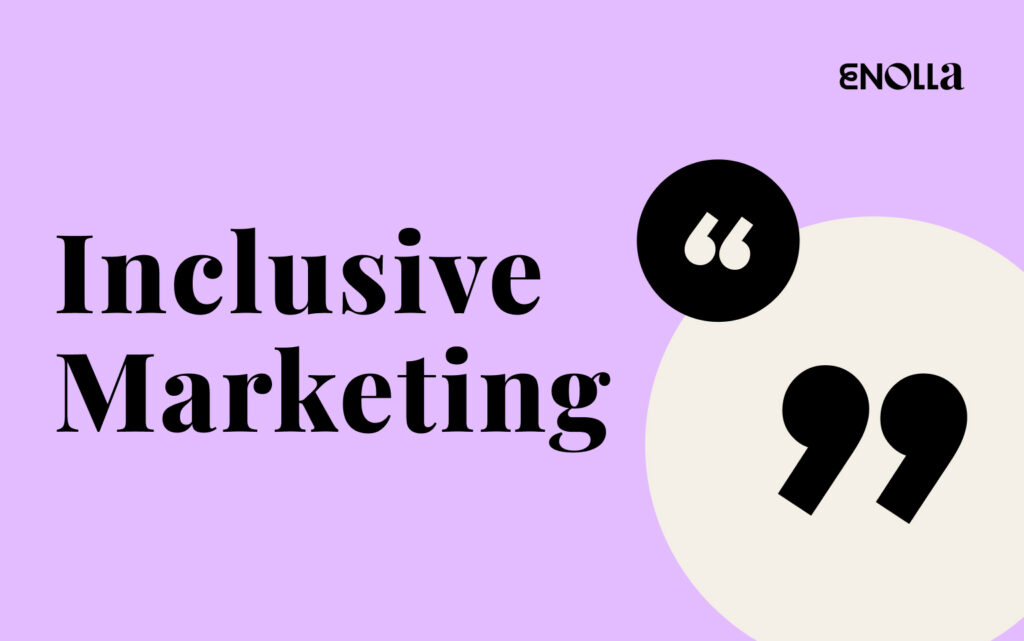Feeling free at work can be defined as experiencing an environment where you are encouraged to express your authentic self without fear of judgement. It involves having the autonomy to pursue your goals, contribute your unique skills and perspectives, and engage in meaningful work, all while receiving support and acceptance from colleagues and superiors.
Let us remember that, embracing wellbeing in the workplace goes beyond providing a few wellness programs or perks; it requires a fundamental shift in organisational culture, and it starts with leadership setting the tone by leading with empathy, transparency, and inclusivity. When employees feel valued for who they truly are, they are more likely to thrive both personally and professionally.
Fortunately, in today’s dynamic work landscape, where diversity and inclusion are increasingly recognised as essential to organisational success, the focus is also shifting toward the impact of inclusion on employee wellness. Companies worldwide are beginning to realise the profound effect that workplace inclusion has on their employees’ overall wellbeing.
After all, inclusion is more than just a buzzword or nice to do, it holds the transformative power to enhance the psychological, emotional, and even physical health of individuals within a workplace.
Join us as we uncover the profound impact of inclusion on workplace wellbeing and discover actionable insights to foster a more inclusive and thriving organisational ecosystem.
Understanding wellbeing in the workplace
Workplace wellbeing encompasses the overall health and satisfaction of employees within their work environment. It encompasses not only physical health but also mental and emotional wellbeing, promoting a holistic approach to employee welfare. This concept refers to a state of comfort, health, and happiness at work, considering physical, mental, and emotional factors.
- Physical Wellbeing: providing ergonomic workspaces, access to natural light, proper ventilation, and opportunities for physical activity. These factors reduce the risk of workplace injuries and illnesses, enhancing productivity and job satisfaction.
- Mental Wellbeing: addressing psychological health, emphasising the importance of stress management programs, access to counselling services, and promoting work-life balance. Supporting mental health reduces absenteeism, enhances concentration, and fosters a more engaged workforce.
- Emotional Wellbeing: creating a supportive work culture where employees feel valued, respected, and understood. This involves open communication, empathy from management, and initiatives that promote inclusivity and psychological safety. A positive work culture boosts morale, loyalty, and overall job satisfaction.
According to a study conducted by WebMD Health Services:
- One-third of employees do not always feel valued in the workplace
- Over 1 in 5 have felt disconnected or unfairly excluded
- About half have personally experienced situations inconsistent with DEI&B¹ culture
- One-third do not believe their company is effective at ‘equity’, encouraging ‘authenticity’ and ‘respect’
¹ DEI&B: Diversity, equity, inclusion, and belonging.
According to the World Health Organization (WHO), depression, and anxiety cost the global economy $1 trillion every year. Research consistently shows us that employees who feel like they belong are happier, more engaged, and experience lower levels of stress. It is easy to make the link to inclusion being the answer, as Inclusion fosters psychological safety within the workplace.
Employees who feel psychologically safe are; more likely to speak up, share their ideas, and take risks, knowing that their contributions will be valued and respected. In psychologically safe environments, employees are less likely to experience anxiety, fear of failure, or the need to hide their true selves, leading to improved mental state of wellbeing.
The role of inclusion in enhancing wellbeing
What is Human Inclusion?
First and foremost, inclusion is the key to everything. When individuals feel valued, trusted, accepted, respected, and appreciated for who they are, they are more likely to experience a deep sense of belonging within the organisation and as a result they will thrive and stay. This sense of belonging acts as a buffer against feelings of isolation and loneliness, which are detrimental to mental health.
Diverse perspectives
Inclusive workplaces also promote diversity of thought. When individuals from different backgrounds, experiences, and viewpoints come together, they bring a wealth of unique perspectives to the table. This diversity of thought stimulates creativity, problem-solving, and decision-making processes. As employees engage with diverse ideas and experiences, they are more likely to feel intellectually stimulated and emotionally fulfilled, contributing to their overall sense of wellbeing.
Sense of belonging
A sense of belonging is crucial for employees’ wellbeing as it fosters a deep connection to their work environment. When employees feel valued and included, they are more likely to engage meaningfully, collaborate effectively, and innovate. This sense of belonging reduces feelings of isolation and enhances overall job satisfaction.
People thrive in workplaces where they feel respected and valued, and high engagement unlocks growth that benefits both people and profits. Check out those numbers:
- Engaged people are 57% more effective¹
- Engaged people are 87% less likely to leave ¹
- Engaged business units are 21% more profitable ²
Inclusive practices
Examples of inclusive practices that enhance wellbeing include:
- Equitable Policies: ensuring that policies and procedures are fair and accessible to all employees.
- Diverse Representation: promoting diversity in leadership and decision-making roles.
- Training and Awareness: providing regular diversity training and fostering awareness of unconscious biases.
- Flexible Work Options: offering flexible work arrangements that accommodate diverse needs.
- Supportive Environment: creating a supportive culture where differences are celebrated and everyone’s voice is heard.
Prioritising wellbeing benefits employees by improving their health, happiness, and job satisfaction. It also benefits organisations by reducing turnover rates, increasing productivity, and fostering a positive employer brand. Investing in wellbeing initiatives demonstrates a commitment to employee welfare, leading to a more motivated and resilient workforce.
Practical strategies for fostering inclusion
Inclusive leadership
Inclusive leadership plays a pivotal role in fostering an inclusive culture within organisations. Leaders who prioritise inclusivity not only set the tone for organisational culture but also empower teams to embrace diversity. They do this by:
- Setting clear expectations: Leaders articulate the importance of diversity and inclusion (D&I) through their actions and words, ensuring that all team members understand its significance.
- Promoting accountability: They hold themselves and others accountable for fostering an inclusive environment, embedding D&I goals into performance evaluations and leadership metrics.
- Empowering diverse voices: Inclusive leaders actively seek out and amplify diverse perspectives, ensuring that all voices are heard and valued in decision-making processes.
Now that we’ve explored practical strategies for fostering inclusion, it’s time to take action. If you need help to start empowering your leadership, you can count on Enolla Consulting. As a Human Inclusion consultancy, we offer tailored training programs designed to help leaders build environments where every voice is heard and valued.
Policies and practices
Implementing specific policies and practices is crucial for enhancing inclusion. Here are some foundational steps you can take to get started:
- Flexible work arrangements: Policies that support flexible schedules and remote work options accommodate diverse needs, including those of caregivers and individuals with disabilities.
- Diversity training: Regular and comprehensive diversity training programs, either virtual or in person, to educate employees on cultural competence, unconscious bias, and inclusive behaviours, fostering a more understanding and respectful workplace.
- Equitable recruitment practices: Implementing blind recruitment processes and ensuring diverse candidate pools help mitigate bias and promote fairness in hiring practices.
When employees perceive that policies, procedures, and opportunities are fair and accessible to all, they are more likely to trust their organisation and feel a sense of justice. On the flip side of that, perceptions of unfairness or favouritism can lead to resentment, distrust, and decreased morale.
By actively fostering an inclusive culture where everyone has an equal opportunity to succeed, organisations can cultivate a more positive and supportive work environment, leading to improved employee wellbeing.
Inclusive communication
Inclusive communication is the cornerstone of a workplace that values every individual and their unique perspectives. It involves actively creating an environment where everyone feels safe and empowered to share their thoughts and ideas. Central to inclusive communication is the practice of open communication, which fosters transparency, trust, and mutual understanding.
Open communication
Open communication is about more than just exchanging information, it’s about building relationships and creating a culture for people to express themselves. To foster a culture of open communication, consider implementing the following strategies:
- Create safe spaces: Encouraging open dialogue and active listening enables employees to express themselves authentically and without fear of judgement.
- Promote transparency: Transparent communication about organisational goals, decisions, and challenges builds trust and fosters a sense of inclusivity among employees.
- Pay attention to language and tone: Using inclusive language that respects diverse backgrounds and experiences demonstrates a commitment to creating a welcoming environment for all.
Communication techniques
By adopting inclusive communication practices, you can ensure that all employees, regardless of their background or identity, feel heard and understood.
Here are some tools and techniques to foster inclusive communication:
- Regular feedback loops: Establishing channels for constructive feedback ensures continuous improvement in communication practices and fosters a culture of openness.
- Cross-cultural training: Providing training on cross-cultural communication equips employees with the skills to navigate cultural differences respectfully and effectively.
- Technology integration: Leveraging collaboration tools, video conferencing, and digital platforms facilitates seamless communication among diverse teams, regardless of geographical location.
There are numerous communication techniques and tools available to assist you daily, and we strongly recommend paying attention to them. We believe these suggestions are a great starting point.
Now that we’ve covered the initial steps, let’s move on to the next stage: measuring the results and their impact.
Measuring the impact
In an Inclusion Strategy, measuring its impact isn’t just about diversity numbers but also about assessing the sense of belonging, employee engagement, and the overall workplace culture. This process incorporates metrics, tools, surveys, and data analysis techniques to provide a comprehensive understanding of the strategy’s effectiveness.
Take a look ahead at some of the analysis topics for you to focus on.
Metrics and KPIs
Key Performance Indicators (KPIs) for tracking inclusion and wellbeing should be aligned with your organisation’s goals and values. These may include:
- Representation metrics: Tracking diversity across various levels of the organisation.
- Retention rates: Analysing turnover rates among different demographic groups.
- Employee engagement scores: Specifically measuring inclusion-related questions in engagement surveys.
- Promotion rates: Monitoring promotion rates to ensure equitable opportunities.
- Inclusion index: Developing an index that combines multiple metrics to provide a holistic view of inclusion efforts.
Keynote: there is a direct correlation between engagement and turnover. According to a Deloitte study in 2023, engaged people are 87% less likely to leave their job. Inclusive workplaces tend to have lower turnover rates and higher levels of employee engagement. When employees feel valued, respected, and supported, they are more likely to be committed to their organisation and motivated to perform at their best. This sense of commitment and engagement not only benefits the organisation in terms of productivity and profitability but also enhances the overall satisfaction and fulfilment of employees in their roles.
Tools and surveys
Choosing the right tools for measuring inclusion and wellbeing is also crucial for obtaining accurate data. Recommended tools include:
- Pulse surveys: Short, frequent surveys that gauge employee sentiment on inclusion.
- Diversity and inclusion software: Platforms that track metrics and provide analytics on diversity and inclusion efforts.
- Focus groups and interviews: Qualitative methods to gather in-depth insights into employee experiences.
- 360-degree feedback tools: Assessing perceptions of inclusivity from multiple perspectives within the organisation.
Despite the tool or tools you choose to use, all of the survey examples above should focus on specific aspects of inclusion, such as:
- Perceptions of fair treatment
- Access to development opportunities
- Comfort in raising concerns
Remember: best practices for surveys include ensuring anonymity, clear communication of survey goals, and regular follow-ups on action plans derived from survey feedback.
Data analysis
Now that your data is mapped, you can move on to analysing it to derive actionable insights from your inclusion metrics. Here are some effective techniques:
- Segmentation analysis: Break down your data by demographics to identify disparities and understand how different groups are experiencing inclusion.
- Trend analysis: Monitor changes in your inclusion metrics over time to see how your initiatives are progressing and where adjustments may be needed.
- Correlation analysis: Identify relationships between your inclusion metrics and key business outcomes to understand the impact of inclusion on your overall performance.
- Benchmarking: Compare your inclusion metrics against industry standards or competitors to gauge your progress and identify areas for improvement.
Using data to drive continuous improvement involves setting realistic goals based on data insights, implementing targeted actions to address identified gaps, and regularly reviewing metrics to track the effectiveness of these interventions.
In conclusion, the impact of inclusion on employee wellbeing cannot be overstated. By fostering a sense of belonging, psychological safety, diversity of thought, fairness, and engagement, inclusive workplaces create environments where individuals can thrive both personally and professionally. Remember that inclusion is not just a corporate buzzword or even about compliance, it’s about creating a thriving environment where employees feel a sense of belonging, contributing to their overall wellbeing and organisational success.
Ready to create a more inclusive and supportive environment for your team? Contact us today to take the next step towards fostering a workplace where every employee can thrive.
Sources
Deloitte | Engaging the workforce
Gallup | Employee Engagement vs. Employee Satisfaction
WebMD | Why Your Program May Be Failing Employees
World Health Organization | Mental health at work
WE ARE ENOLLA CONSULTING, A HUMAN INCLUSION CONSULTANCY.
We partner with our clients to create efficient, compassionate, and engaged working environments through fostering the power of Human Inclusion. Ready to transform your organisational culture with us?




